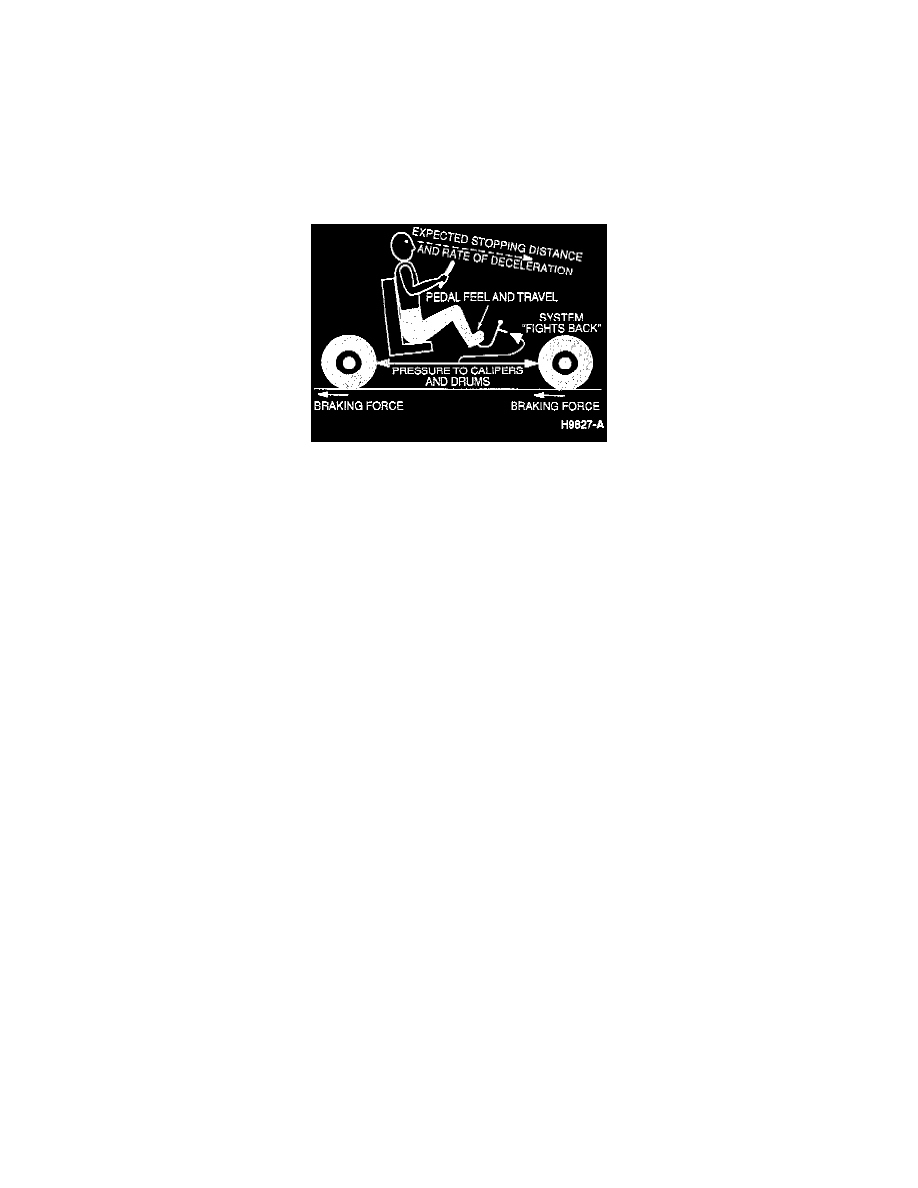F 350 4WD Pickup V8-351 5.8L VIN H EFI (1997)

Brake Master Cylinder: Component Tests and General Diagnostics
Brake Pedal Feel and Stopping Distance
A combination of conditions indicates whether brakes are working properly: the feel of the brake pedal, how rapidly vehicle slows down and distance
travelled before stopping.
Customers often report brake problems in terms of brake pedal feel. "My brakes feel spongy" or "The brake pedal went to the floor" or "The brakes feel
hard and I have to apply much more force than usual" are all possible customer complaints. These complaints are often accompanied by reports that the
vehicle "Just didn't stop the way it should." These simple complaints can indicate concerns that are much more complex to diagnose and correct.
Stopping Perceptions
Understanding brake feel and stopping distance is a challenge because different brake systems have a different feel and a different braking response. Feel
is the result of several factors, described below.
DESIGN
Brake feel will vary from vehicle to vehicle, even of the same design, depending on how the vehicle is equipped.
OPERATION
How the vehicle is used can change the feel of the brakes. Factors such as loading, trailer towing and operating on steep grades or gravel roads can all
affect the feel of the brakes.
PEDAL FORCE AND TRAVEL
The amount of force applied, combined with the amount of brake pedal travel will affect the feel and stopping response. Some drivers are stronger than
others and can force the brake pedal down farther.
SPRING OR GIVE IN THE SYSTEM
A "springiness" in the system that "fights back" against the hydraulic pressure is felt through the brake pedal. The spring can be the result of flex in disc
brake calipers as force is applied, swelling in flexible hoses under pressure, and extension of shoe return springs. As parts of the system become worn or
corroded, the "fighting back" feel can change.
THE VEHICLE THAT KEEPS COMING BACK
If a vehicle has been brought in for brake service frequently, take a close look at the service history. How long did that vehicle go before its first brake
service? What has happened since? If components have been replaced, are they the correct parts? Recurring problems can be the result of some mistake
made earlier in the service history.
Compensator Port Test
The compensator ports in the brake master cylinder supply additional brake fluid required by the system due to brake pad wear and allow brake fluid
returning from the brake lines to the brake master cylinder to enter the brake master cylinder reservoir. The returning brake fluid will cause a slight
turbulence in the brake master cylinder reservoir. If turbulence is seen in the brake master cylinder reservoir upon release of the brake pedal, this is
normal and indicates that the compensating ports are not plugged.
Non-Pressure Leaks
The only part of the brake system that could have a brake fluid loss that does not appear when the system is under pressure is the brake master cylinder
reservoir area. Brake fluid loss could be caused by any of the following:
